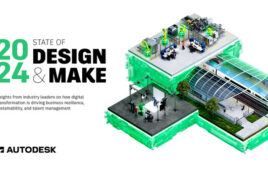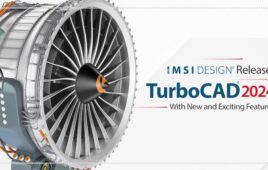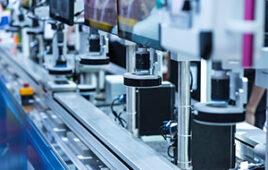For many, driving is one of life’s pleasures. Tooling the nation’s roadways takes us to work, vacation spots, business and personal appointments. We’d be lost without our vehicles. For the blind, however, driving is one of life’s missed conveniences.

Blind drivers have been trying out a prototype vehicle that is specially outfitted with devices to help
them navigate. Students at Virginia Tech used SolidWorks software to design various parts of the car.
That could change because students at Virginia Tech are working to help blind drivers “see” with their hands and ears. Kimberly Wenger, senior and student leader of the Virginia Tech Blind Driver Challenge (BDC) project, says, “Many blind people prefer the concept of driving as opposed to being driven. There is no reason why the blind can’t drive someday and they are proving it in our semi-autonomous vehicle. The next step is perfecting the technology so they can drive on the open road without endangering anyone.”
The BDC team used SolidWorks software to perfect the design of the roulette-style click wheel. They used the software to design various concepts for the click wheel’s internal mechanisms and to conduct several structured design reviews to visualize ideas, detect part interferences, and select the best design. They also used SolidWorks to design the dashboard panel, battery holder, and drive the laser cutting of the parts.

The Blind Driver Challenge vehicle has a device that gives drivers a real-time tactile topographical map of their surroundings so they can make their own decisions on turning, slowing down, or stopping.
Blind people have been driving Virginia Tech’s specially equipped dune buggy in parking lots throughout the summer of 2009. They had full control of the steering, accelerator, and brakes. They followed computer-generated steering commands delivered through headphones. The steering wheel emits an audible click for every five degrees it’s turned. A vibrating vest signals the driver to slow or stop. The on-board computer produces direction based on data about the car’s surroundings collected by a laser on the front of the car.
The next major feature on the BDC vehicle will be a breakthrough device that gives drivers a real-time tactile topographical map of their surroundings so they can make their own decisions on turning, slowing down, or stopping. Through this device called the AirPix, drivers will detect terrain through their fingertips. AirPix works something like an air hockey table, with pressure forced upwards through pin holes. Stronger pressures indicate obstacles. The team is using SolidWorks to design that device.
The BDC team consists of 12 mechanical engineering students working under Dr. Dennis Hong in his Robotics and Mechanism Lab (RoMeLa). The project is the school’s response to a challenge issues by the National Federation of the Blind Jernigan Institute which is dedicated to helping the blind achieve independence.
SolidWorks
www.solidworks.com
Virginia Tech
www.vt.edu
::Design World::
Filed Under: Software • 3D CAD, Automotive, ENGINEERING SOFTWARE, Student programs





Tell Us What You Think!